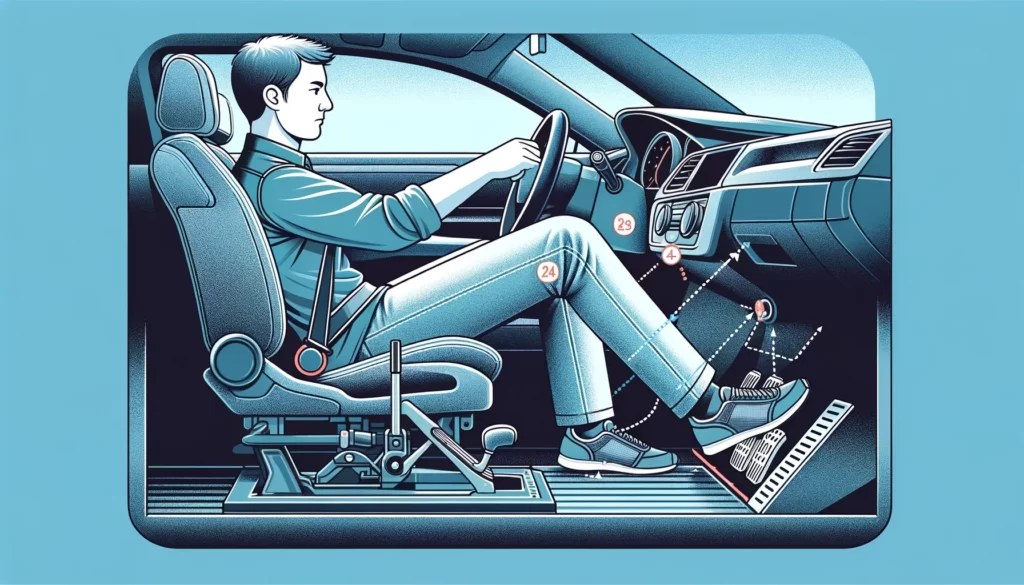
Table of Contents
Introduction
Knee pain from driving is a prevalent issue affecting many individuals, often caused by the position and movement of the knee during extended periods of driving. Sharing a personal anecdote or a relatable scenario can effectively connect with readers who might be experiencing similar discomfort.
Understanding Knee Pain from Driving
The mechanics of knee pain related to driving primarily involve prolonged periods of sitting, repetitive pedal movements, and often inadequate ergonomic setups in vehicles. This pain is commonly a result of the stress placed on the knees due to these factors. The position of the pedals, the angle of the seat, and the way the steering wheel is held can all contribute to inner knee pain.
In-Depth Look at Contributing Factors
Different driving styles, such as manual versus automatic transmission, can affect the degree and type of knee pain experienced. Additionally, individual factors like body weight, driving frequency, and pre-existing conditions like osteoarthritis or chondromalacia patellae can exacerbate knee pain. Overuse or repetitive use of the knee joint in driving can stress the patellofemoral joint, leading to pain.
Comparative Analysis
Comparing knee pain from driving with other sedentary professions reveals similarities in the causes of discomfort, primarily due to prolonged sitting and limited mobility. While specific statistics or studies were not found during the research, it is well understood that sedentary lifestyles, in general, contribute to various musculoskeletal issues, including knee pain.
How To Prevent Knee Pain While Driving
To prevent knee pain while driving, it’s important to adjust the seat height so that the knees are at a 90-degree angle when the foot is on the gas pedal. Steering wheel adjustment and frequent breaks for stretching are also crucial. Ensuring proper footwear and incorporating gentle post-driving stretching exercises can significantly alleviate knee pain. These measures not only reduce immediate discomfort but also mitigate long-term strain on the knee joints.
Preventive Measures
Adjusting Seating and Posture
- Seat Height and Angle: Adjust your seat so that your knees are slightly bent when pressing the pedals. The seat should be at a height where your thigh is parallel to the ground. The backrest angle should be between 100-110° to reduce pressure on your back.
- Seat Distance: Ensure the distance between the seat and pedals allows your legs to be comfortably extended but not fully straight. Your hips should be level with or slightly higher than your knees.
- Steering Wheel and Mirror Adjustment: Position the steering wheel so that you can comfortably reach it without straining your arms, chest, and shoulders. Adjust your mirrors to minimize neck strain and ensure good visibility without needing to move your head excessively.
- Footwear: Wear comfortable shoes that provide support and cushioning, reducing strain on your knees.
Regular Exercises and Stretches
Engage in gentle stretching exercises targeting key leg muscles such as quadriceps and hamstrings after driving to alleviate stiffness and discomfort.
Breaks and Foot Positioning
Take regular breaks during long drives to allow for movement and stretching. This helps reduce fatigue and knee pain.
Treatment Options Beyond the Basics
Specialized Physiotherapy Techniques
Explore advanced physiotherapy techniques tailored to address specific knee issues exacerbated by driving. These techniques could involve exercises to strengthen the muscles around the knee, improve flexibility, and reduce strain.
Expert Insights on Managing Knee Pain
Adjusting Your Driving Position
Adjusting your driving position is a critical factor in preventing or reducing knee pain. This includes setting the seat height for a clear view of the road, ensuring your knees are comfortably angled when pressing pedals, and positioning the seat at a distance where your legs are slightly bent but not fully extended.
Seat Angle and Distance
The seat angle should be slightly tilted backward, around 100-110 degrees, to maintain the natural curvature of your spine. Additionally, the seat should be positioned to avoid compression of your knees against the dashboard.
Choosing the Right Vehicle
Select a vehicle with supportive, adjustable seats, ample legroom, and comfortable entry and exit to minimize knee strain. Consider automatic transmission vehicles to reduce the repetitive motion of using a clutch.
Lifestyle and Holistic Approaches
Exercises and Stretches
Regular exercises and stretches can significantly improve knee health. These include quad sets, straight leg raises, hamstring stretches, and calf stretches. It’s vital to consult with a healthcare professional before starting any new exercise routine, especially if you have existing knee conditions.
Long-Distance Driving Tips
For long-distance driving, plan your route to include rest stops for stretching, stay hydrated, wear comfortable clothing, and ensure enough sleep before the drive. Adjusting the seating and using cushions or lumbar supports can enhance comfort during the journey.
Conclusion
In conclusion, managing knee pain while driving involves a multifaceted approach, including proper vehicle setup, posture adjustments, regular exercises, and taking breaks during long drives. By incorporating these strategies, individuals can significantly reduce the risk and discomfort of knee pain, leading to a more comfortable and safer driving experience.


